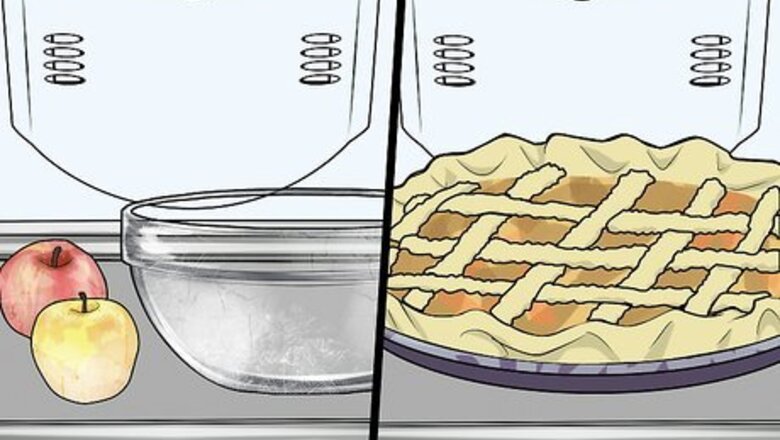
views
Tweaking Your Recipe
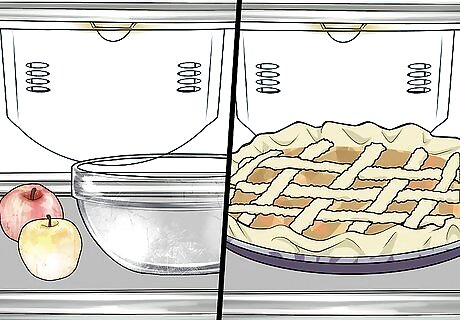
Make your pie using cold ingredients. Preparing your pie with cold ingredients and then putting the chilled pie into a hot oven will help prevent mushiness. Everything should be cold, including your ingredients, bowls, and materials. You can chill your pie in the refrigerator, as well. To chill your pie in the refrigerator, place the assembled pie inside the refrigerator for about fifteen minutes. Preheat your oven to the baking temperature. Put the cold pie into the hot oven.
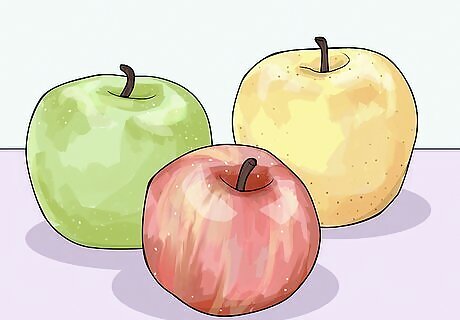
Choose tart apples. When you cook apples, the pectin in them breaks down, making the apples watery. The lower pH value of tart apples reduces the amount of pectin that breaks down, so the apples hold their shape and get less mushy. This will prevent your pie from getting watery. Your best apple choices are Granny Smith, Gala, and Golden Delicious. Use firm apples and avoid overripe fruit.
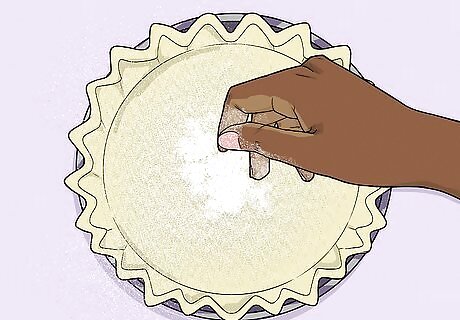
Add a thin sprinkling of flour on top of your bottom crust. A light layer of flour will soak up excess liquid in your filling without changing the flavor of your pie. Sprinkle the flour over the pie crust before you add your pie filling. You can also use ground nuts, though you might be able to taste them in the pie.

Cut vents into your crust. You need to cut five ¾”-inch (2 centimeter) vents in your top pie crust to allow the evaporating liquid to escape. This will prevent the pie from becoming soggy. Vents are usually placed near the center of the pie. Many people enjoy making five vents in a star pattern like the seeds inside an apple. Your vents will also help you tell if the pie is ready. The pie filling will start to bubble up out of the vents when it is nearly done. A lattice style pie does not need vents as long as there are gaps in the lattice. You also do not need to cut vents into a Dutch apple pie, which will be topped with a crumbly topping.
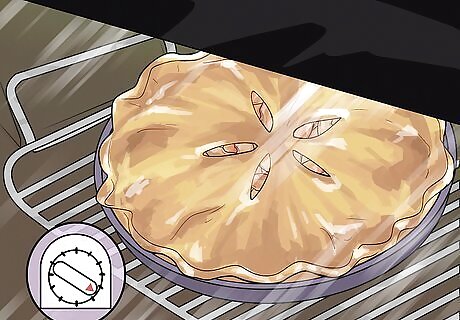
Allow your pie to bake for the entire recommended period. Your pie may start to brown early, making it look ready. People often pull their pie too soon out of fear that it will burn. This leads to runny pie because it prevents the filling from thickening. Check the recommended cooking time, and set a timer. Don’t use the brownness of your pie crust to judge if it is done.

Use aluminum foil to prevent over-browning the crust. If you're worried your crust will over-brown, cover the crust with foil halfway through baking. To do this, measure your foil before you put the pie in the oven. Pull off a piece big enough to cover the whole pie, then cut out the center so that only the crust will be covered. Halfway through your baking time, carefully place the foil onto the pie, covering the crust. You can also place strips of foil around the edge of the pie crust, but it's safer to use one big piece since you could burn yourself on the hot pie. If your oven has a tendency to cook pies unevenly, then you may want to apply foil strips to just the part of the crust that is already brown, leaving the rest to continue browning.
Soaking Your Apples

Place your fruit in sugar. Add your sliced apples into a bowl and add the amount of sugar your recipe calls for. The sugar will draw out the excess liquid from the fruit. Try tossing the apples in cinnamon too to help absorb some of the moisture.
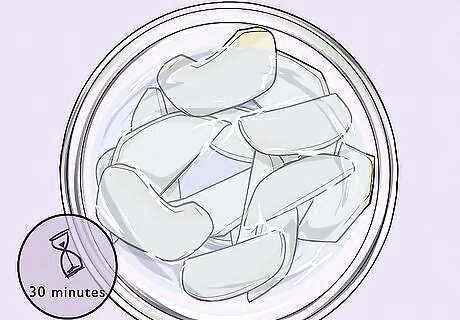
Allow your apples to soak at least 30 minutes. Set aside the bowl for a half an hour. During this time, you can prepare the crust if you’d like.

Drain away the natural juices. Use a colander to strain all of the liquid from the bowl. You can use this liquid in another recipe if you’d like, or you can try to thicken it by cooking it on the stove. If you decide to thicken it, heat it over low heat until the extra moisture evaporates, leaving a thicker sauce. You can add this sauce to your pie if you’d like, though you may want to add a thickener if you do. Cook the sauce until it reaches your desired consistency or it reaches the thickness of syrup.
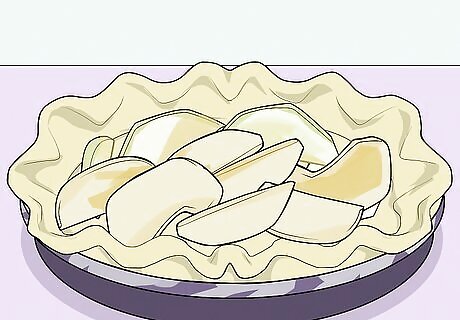
Add the apples to your pie. When you are ready to insert your pie filling, place the apples into the pie crust. Continue with the rest of your recipe. If you plan to use the sauce you made using the natural juices as filling, add that to the pie as well.
Adding Thickener
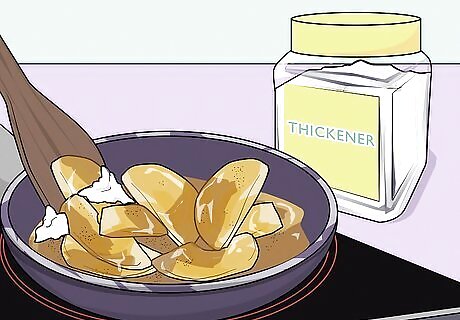
Bulk up your apple mixture with thickener. A thickener prevents the filling from being too watery by adding a substance that will absorb some of the liquid that seeps out of the fruit. A small amount of thickener should not alter the flavor of your pie.

Use cornstarch as a thickener. Cornstarch is smooth and doesn’t alter the flavor, though it can make your fruit mixture look opaque.

Try flour as a thickener. Flour is convenient because you should already have some on hand. It shouldn’t alter the flavor, and usually works well for apple pie.

Choose quick-cooking tapioca as a thickener. Quick-cooking tapioca is best for soaking up extra liquid, and it doesn’t make your filling look cloudy. It does require at least ten minutes of cooking at 400 degrees Fahrenheit (204 degrees Celsius) in order for it to fully thicken the mixture.

Add one tbsp (15 ml) of thickener per pound (.45 kg) of apples. Stir the thickener into your apple mixture before pouring it into the crust. The thickener should be well-blended into the mixture. Expect cornstarch and flour to make your pie filling a bit cloudy. This is normal.
Pre-Cooking Your Apples
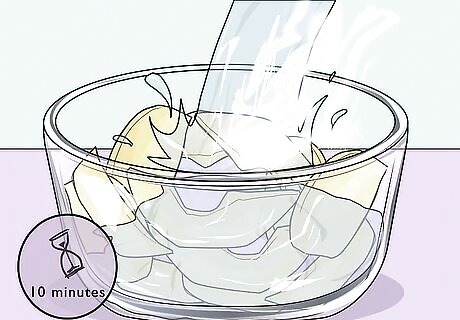
Pour boiling water over the apples, then let them sit 10 minutes. Boil enough water to cover your apples. Place the sliced apples in a heat-safe bowl. Pour the water over the apples, then cover the bowl. Let them sit for ten minutes. Drain the apples, then continue with your recipe. You can also use apple cider for a cider-flavored pie filling.
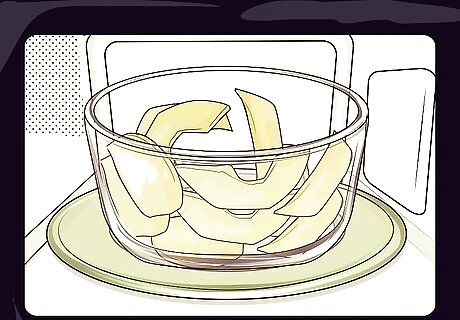
Nuke your apples in the microwave. Place your sliced apples in a microwave safe container. Nuke the apples for three minutes, then stir and measure the temperature. Continue to heat and stir at three-minute intervals until your apples reach 160 degrees Fahrenheit (71 degrees Celsius). Allow the apples to rest for ten minutes, turning on the microwave for five seconds every three to four minutes to keep the apples at the right temperature.
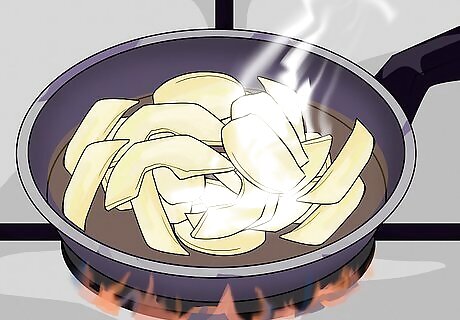
Heat the apples on your stove. Place your sliced apples in a skillet. Heat the skillet on medium-high heat, constantly stirring the apples. You should stir the apples for the entire time you are heating them. Heat the apples for ten minutes. This is the hardest way to pre-cook the apples since you must stir the entire time.




















Comments
0 comment